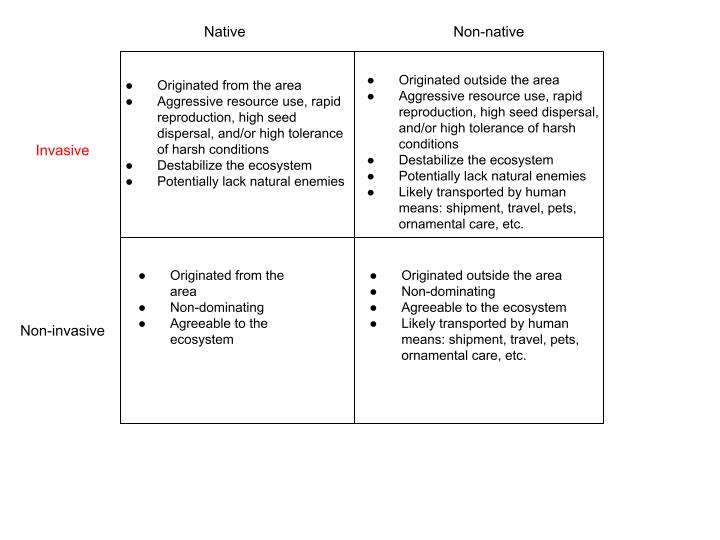Invasive, noxious, non-native- what’s the difference?
Invasive weeds are plants that dominate an ecosystem and spread rapidly once established, outcompeting native species, changing the composition of the habitat, and reducing overall biodiversity. According to the Intergovernmental Science-Policy Platform on Biodiversity and Ecosystem Services (IPBES), invasive species play a role in 60% of global plant and animal extinctions.
The term ‘noxious’ refers to a designation by a tribal, local, state, or federal authority of a plant as ‘injurious to public health, agriculture, recreation, wildlife or property’. The label allows land managers and owners to take action to curb or eradicate the species.
‘Non-native’ plants are plants from outside the given habitat; they are often invasive as they usually lack natural enemies and/or barriers to acquiring resources in their habitat. They can be planted intentionally, as in ornamental use, or accidentally through transport. Following the “Ten Percent Rule”, 10% of a given amount of non-native species introduced to a new habitat will survive, and 10% of these survivors will dominate (thus 1% overall). However, those that do dominate inflict incredible damage. Nevertheless, not every introduced species will have selective advantages over native flora and fauna and may work quite amiably in the habitat. Likewise, some native species can be considered invasive if they reproduce aggressively, overtake resources, and/or otherwise destabilize the ecosystem.
Specially regulated species, such as the Amur maple, have unique restrictions. They may be native and hold economic value, such as in ornamental settings, but they present environmental concerns and require specific management plans.
See below for a helpful graphic:

Follow this link for an identification guide to our most common invasives
You must be logged in to post a comment.